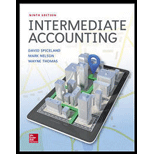
Concept explainers
Derivatives: Derivatives are some financial instruments which are meant for managing risk and safeguard the risk created by other financial instruments. These financial instruments derive the values from the future value of underlying security or index. Some examples of derivatives are forward contracts, interest rate swaps, futures, and options.
Hedging: This is the business deal entered into, by a company to produce exposure or coverage over the exposure caused by the existing deal. In simple terms, this is the transaction which produces gains to cover the losses produced by existing transaction.
Fair value hedge: If the company uses any derivative to cover the risk due to fair value changes of asset, liability, or a commitment, the derivative is classified as fair value hedge. This type of hedge focusses to control the risk due to future price changes.
Foreign currency hedge: A multinational company faces the risk due to changes in foreign currency rate, when the transactions of its foreign operations are denominated in foreign currency, and such transactions require settlements through translation. The derivative used to hedge such type of foreign currency risk is designated as foreign currency hedge.
To indicate: The type of hedge against the activity given
Want to see the full answer?
Check out a sample textbook solution
Chapter A Solutions
INTERMEDIATE ACCOUNTING (LL) W/CONNECT
- How does triple bottom line reporting enhance traditional financial statements? (a) It deals exclusively with social impacts (b) It only focuses on environmental costs (c) It measures profit, people, and planet impacts simultaneously (d) It reports financial profits three ways. MCQarrow_forwardWhat is the materials price variance?arrow_forwardThis means that her variable costs arearrow_forward
- The following information is available for Barnes Company for the fiscal year ended December 31: Beginning finished goods inventory in units 0 Units produced 8,200 Units sold 5,700 Sales $ 741,000 Materials cost $ 164,000 Variable conversion cost used $ 82,000 Fixed manufacturing cost $ 820,000 Indirect operating costs (fixed) $ 114,000 The absorption costing ending inventory is: Multiple Choice $329,000 $325,000 $297,000 $313,000arrow_forwardEleanor Technology, a firm with no net debt, reports cash flow from operations of $7,840 million in its cash flow statement after adding $2,250 million in accruals to earnings. It reported cash investments in operations of $4,680 million. What were Eleanor Technology's free cash flow and earnings for the period?arrow_forwardWhat is the gross profit? Accounting questionarrow_forward
- Under what basis are property tax accruals recognized in financial statements? (A) When tax assessment is received (B) End of calendar year only (C) When payment is made (D) Pro-rata over the fiscal tax year. need helparrow_forwardCan you help me solve this general accounting question using valid accounting techniques?arrow_forwardKindly help me with this General accounting questions not use chart gpt please fast given solutionarrow_forward
 Intermediate Financial Management (MindTap Course...FinanceISBN:9781337395083Author:Eugene F. Brigham, Phillip R. DavesPublisher:Cengage Learning
Intermediate Financial Management (MindTap Course...FinanceISBN:9781337395083Author:Eugene F. Brigham, Phillip R. DavesPublisher:Cengage Learning Intermediate Accounting: Reporting And AnalysisAccountingISBN:9781337788281Author:James M. Wahlen, Jefferson P. Jones, Donald PagachPublisher:Cengage Learning
Intermediate Accounting: Reporting And AnalysisAccountingISBN:9781337788281Author:James M. Wahlen, Jefferson P. Jones, Donald PagachPublisher:Cengage Learning

